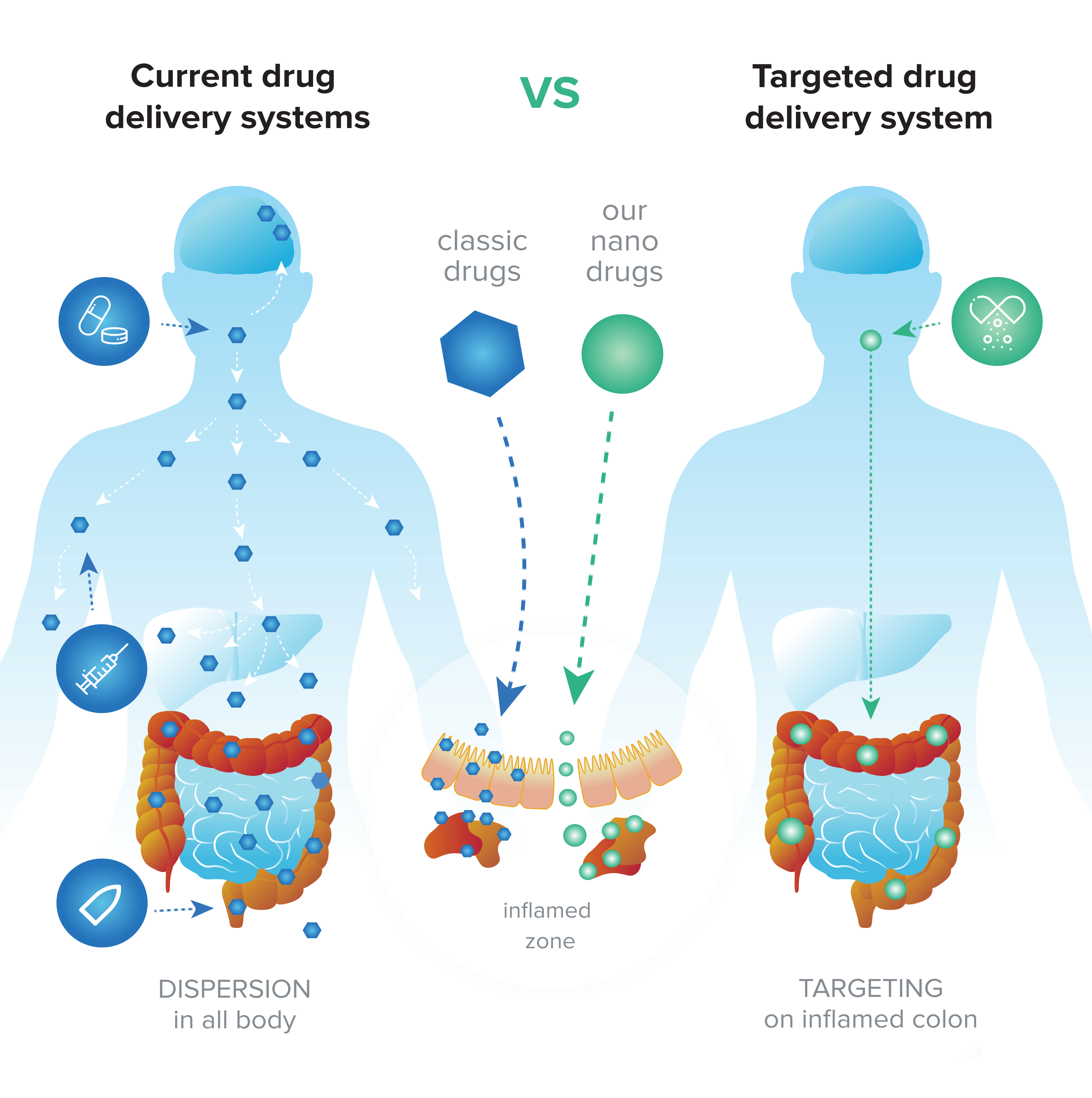
250,000 Europeans suffer from Crohn’s disease. More than 700,000 patients are in the United States. There are also thousands more in Japan, Australia and Canada. In total, several million people worldwide live with the diagnosis of “chronic inflammation of the intestines.” And with its unpleasant symptoms, of which frequent diarrhea is one of the least problematic. The richer a country is and the more northward it is, the more likely it is that its inhabitants suffer from this disease.
Sovigo is a company that aims to alleviate these medical issues with a precise method for targeting disease. It was founded by two biotechnologists: Paweł Mituła and Grzegorz Kiełbowicz. Previously, Paweł used to work in projects within the field of nanotechnology for chemical companies. Grzegorz worked for the pharmaceutical industry. They have now joined forces and want to apply nanotechnology to pharmacy. For their first area of focus, they chose diseases of the digestive system and started out with non-specific diseases of the intestines.

You want to help people suffering from ulcerative colitis and Crohn’s disease, except you are not inventing a new cure. What exactly are you doing?
Paweł Mituła, COO: We are working on a new technology for administering medicines via nanotechnology. We are making nanocapsules which are about 100 nanometers in size. These can be filled with medicinal substances as they’re already available on the market. These nanocapsules become part of the tablet that the patient swallows … and the tablet then makes its way to the stomach where it is digested. So how does a nanoparticle tablet differ from a regular tablet? In the stomach, the tablets are protected with a special coating. Nanoparticles are released from the tablet during the later stages of the digestive process. They subsequently dissolve and gradually release the drug only in the places where the disease is also prevalent. Of course, in order to develop these types of nanoparticles, we need to be very familiar with the disease and understand its specific characteristics.
Why such a solution? Why not keep to the traditional way of administering medicine?
Drugs very often have a lot of side effects. When a patient swallows a regular tablet, only part of the medicine goes to the right place where the disease is. The rest gets spread throughout the body and frequently affects healthy organs. In cases like these, it is often necessary to increase the dose of the drug, e.g. by frequent repetition of the dose. In the end, that means that the total dosage of the drug might be very high. As we can precisely administer drugs that are enclosed in our capsules directly to the area where the disease is, we are able to protect the patient against several negative consequences. We can avoid drug penetration of healthy tissue and reduce the drug dose and its side effects. As well as further improve therapeutic effectiveness by reducing the occurrence of drug resistance. The structure of our nanocapsules consists mainly of bio-compatible molecules which facilitate penetration into cell membranes. Therefore, the effectiveness of the drug is increased via this kind of administration. Moreover, the medication is able to be taken less frequently. The capsule is glued to the medication as if it were “adhesive tape.” This helps the capsule to move very slowly through the affected area and gradually releases the drug as it does so. Thanks to our technology, drugs are already available on the market which can be administered more effectively and avoid any unnecessary side effects.
What is the biggest obstacle for you?
Availability of research equipment. We operate in an extremely narrow field and need very specific equipment. Like, for example, nanostructure analysis devices – microscopes that allow you to see how our nanocapsules are built. Wroclaw, where we have our headquarters, is very well equipped with this kind of apparatus. Yet it is not just in one place, but scattered around various institutions. Therefore, it takes us a long time to carry out research as we are forced to drive all over the place in order to do it.
Are you a fledgling company or can you already talk about some successes?
We have some excellent research results. We have managed to successfully scale up a few prototype ideas. Which is a major challenge when it comes to nanomaterials. I think that if we did our research at a university and published it, we would already have made it into some very good scientific journals by now. The idea itself has stirred up a lot of interest among both doctors and patients in the pharmaceutical industry. The fact that the subject matter is not that easy and yet we have still managed to solve new problems step by step – well that really motivates us. I think that the turning point and a decisive success will be the validation of our critical analytical method and processes for the pharmaceutical industry. Along with any successful initial results from our biological research.
What are your plans for the coming year?
By the end of this year we want to finish the proof-of-concept phase. I’m talking about biological research, which should prove the effectiveness of our technology using biological systems. We would also like to submit a patent application. Only after that will we look for a strategic investor.
Where do you imagine the company in 5 years?
We want Sovigo to become a synonym for modern and groundbreaking oral drug administration systems. In 5 years time, we hope that we will develop 4-6 projects in parallel with each other. Followed up by at least one commercial launch and hopefully several other projects will be in the clinical trial phase. We also want to develop our technologies in the area of nano-pharmacovigilance production lines.

